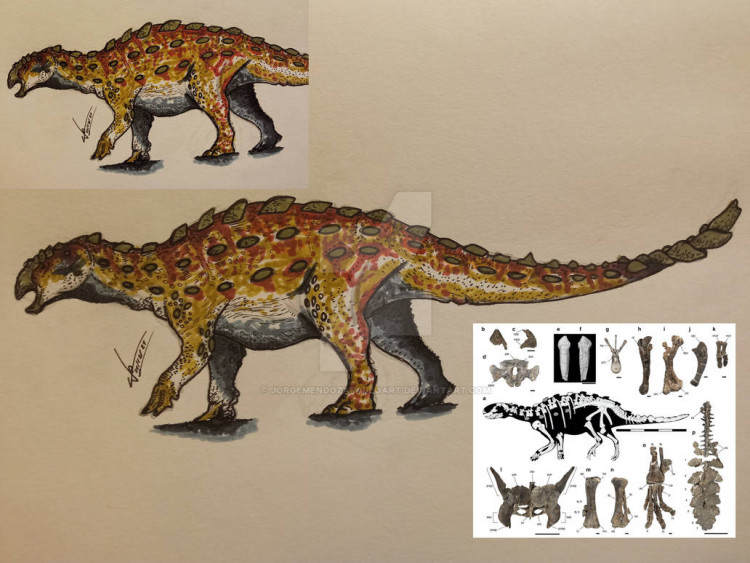A new species of armored dinosaur unearthed in Chile possessed a weaponized tail like no other dinosaur before it.
The little armored dinosaur known as an ankylosaur is around 2 meters (6.5 feet) long and dates from the late Cretaceous period, roughly 71.7 million to 74.9 million years ago. Its largely complete fossilized skeleton was discovered in Chile's southernmost region, Patagonia, in Magallanes province.
"The tail would have looked like a sword; it's so flat," study co-lead researcher Alexander Vargas, a vertebrate paleontologist in the Department of Biology at the University of Chile, told Live Science. It would have looked "a bit like an Aztec sword, or the Aztec club called the macuahuitl."
The dinosaur's remains, in addition to revealing its weaponized tail, reveal a previously unknown story about ankylosaur evolution: the breaking apart of the supercontinent Pangaea during the Jurassic period (201.3 million to 145 million years ago) resulted in extreme differences between ankylosaurs on the northern supercontinent Laurasia and those on the southern supercontinent Gondwana, such as this newfound species, Stegouros elengassen.
Paleontologists discovered S. elengassen in Cretaceous period rocks in February 2018.
"It's weird, because it's articulated [the bones are in order] from the waist down, and everything from the waist up was kind of scattered," Vargas said of the well-preserved skeleton.
He speculated that the beast died near a river, possibly in quicksand, which would explain why its lower half is so well preserved.
According to the study, very few ankylosaurs have been discovered in southern Gondwana, the lower part of the ancient supercontinent Pangea.
"Unlike the ankylosaurs of the northern hemisphere, our new dinosaur possesses light armor, slender legs, and a smaller size," he said.
The fossilized plants found in the same area show that the environment was warmer when this dinosaur lived there, which is considerably different from the current cold climate in Patagonia.
The team had only five days left in the field season to unearth the dinosaur remains, which resulted in a laborious effort that included a damaged ankle, a broken rib, and near-hypothermia among the crew, according to Vargas.
But their efforts paid off: the primarily Chilean team now has an exquisite specimen of an about 6.5-foot-long (2-meter) ankylosaur with a tail like a fern frond, a feature unique to the species.
The newfound species was described in a study published online Wednesday (December 1) in the journal Nature.






